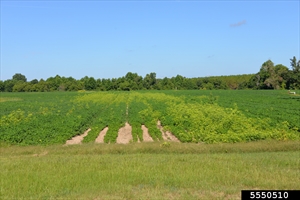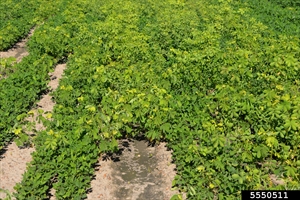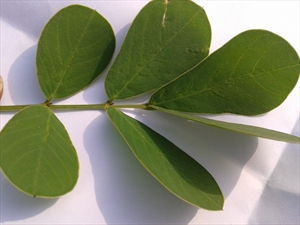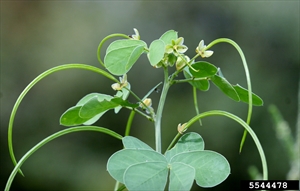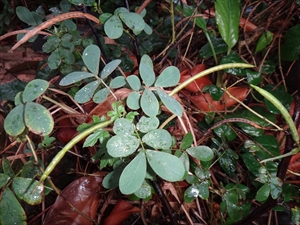- Widespread. Asia, Africa, North, South and Central America, Caribbean, Europe, Oceania. In many Pacific islands.
- Invasive, continuous expanses in disturbed sites, waste areas, roadsides, waterways, pastures, agricultural crops (cotton, peanut, soybean, sugarcane), including plantations (coconut, sugarcane). Sicklepods thrive in many soil types. Alternative hosts of Tobacco mosaic virus and Colletotrichum capsici, anthracnose of Solanaceous crops.
- Relatively small, 50-150 cm, multiple-branching, erect shrubs, with strong tap roots. Leaves, alternate along the stems, with 2-4 pairs, oval, opposite leaflets, with elongated rod-like gland between the last pair. Flowers, on short stalks, mostly near tips of branches, with five yellow petals. Fruits, sickle shaped, brown when mature, curving downwards. Seeds, shiny, flattened, many per plant, lasting up to 20 years
- Spread: seed, by animals (pass through the gut), water; mud on animals, footwear, vehicles; contaminant of fodder and pasture seeds.
- Biosecurity: high risk of introduction; contaminant of pasture seed. Among 10 worst weeds in American Samoa, Tonga, Vanuatu. In Australia, 'restricted invasive plants': do not release into environment, give away or sell.
- Biocontrol: Alternaria cassiae used as a mycoherbicide in USA.
- Cultural control: hand weeding; slashing; cultivation; mulch; control movement of cattle to prevent spread; vehicle hygiene.
- Chemical control: in Australia: 2,4-D; 2,4-D + picloram; dichlorprop-p; triclopyr + picloram; dicamba. Treat seedlings and new growth. In Fiji, glyphosate.
